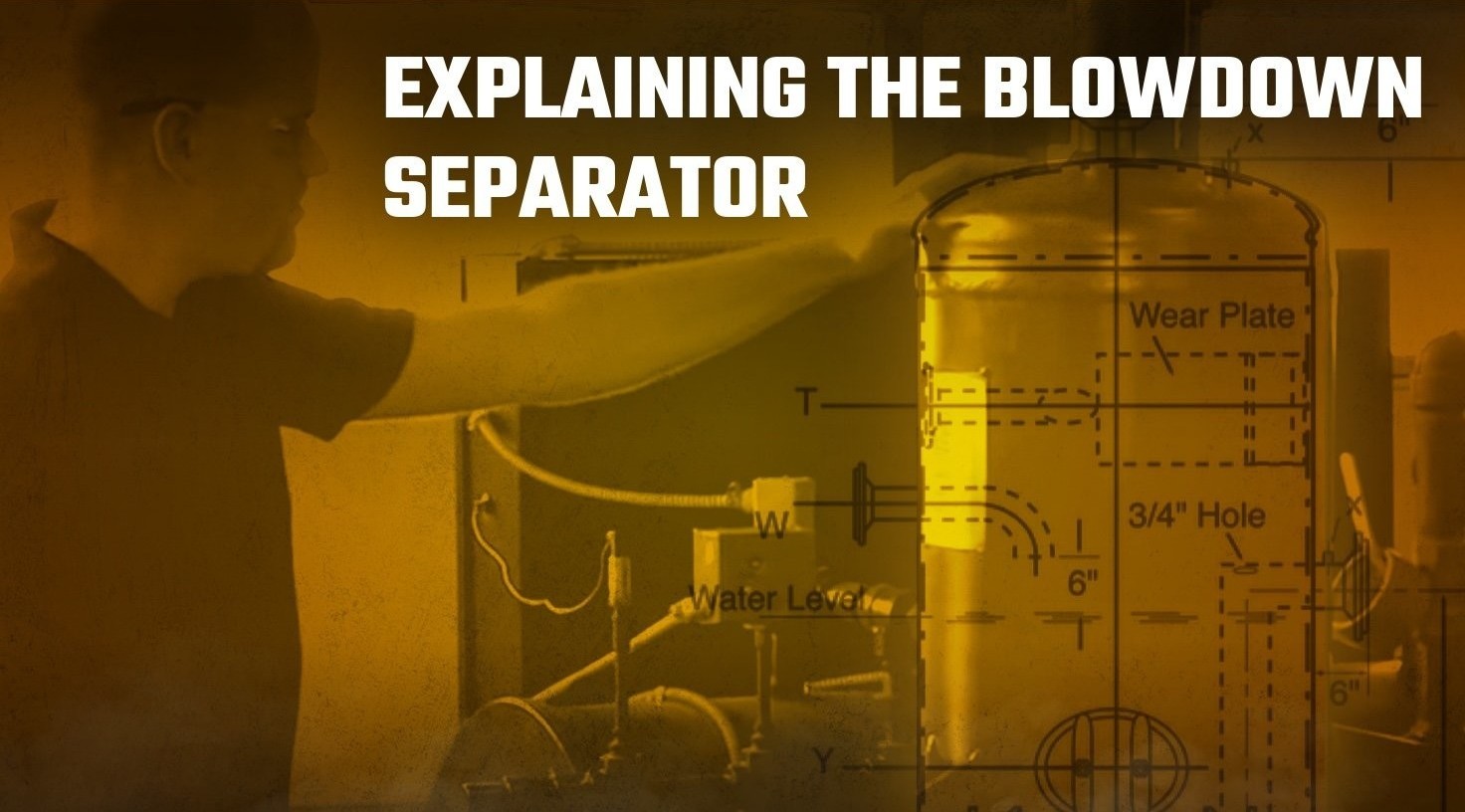Every boiler has a bottom blowdown valve. It’s there to help release the sediment and other impurities that start to collect at the bottom of the boiler. You want that stuff out of there, because if it’s allowed to build up, it can really harm the performance of your whole system. Scale buildup can act as an insulator, which means your system will require more energy to heat the water. This heat differential can even cause metal fatigue over time, as well. So, be sure to blow down your boiler on a regular schedule to keep it operating properly.
To keep your blowdown procedure safe, though, your system should have a blowdown separator installed. When your blowdown valve is opened, you’re releasing scalding hot water that is under pressure. Since it’s no longer under pressure, some of that water is going to flash to steam as it travels out the drain pipe. By installing a blowdown separator, you give the flash steam and the hot condensate each a safe, controlled path to escape.
Here’s how it works: Water draining through the blowdown valve enters the blowdown separator, where it is directed onto a helix-shaped metal striking plate that runs vertically in the separator housing. As water flows over and down this plate, the flash steam is drawn out, away from the condensate. The steam then vents upwards into the atmosphere, while the hot condensate is recaptured for use or drained away.
Check Your Ratings
For safe operation of a blowdown separator, the separator has to be rated for the pressure of your boiler system. After all, that’s the pressure it’s going to encounter every time you open the blowdown valve. However, it’s also important to make sure that your drain system is properly rated for the temperature of your condensate.
If your boiler operates under high pressure, the water that exits the blowdown separator may still be superheated because it’s still above atmospheric pressure. In such cases, your drain system needs to be able to handle temperatures in excess of 212°F. If your drain can’t handle temperatures that high, you can install an aftercooler that will bring the hot condensate down to a more manageable temperature before draining. Most city water and sewer services require that water going to drain be under 140°F.
Keep Drain Diameter Consistent
One important thing to remember with a blowdown separator is that drain pipe diameter must remain consistent along its entire run. If the pipe diameter reduces at any point in the condensate’s path, that creates the risk of backpressure. If the water becomes backed up in the drain, it can re-enter the blowdown separator, travel up the steam vent pipe, and spray scalding hot water all over the area. Needless to say, that could prove disastrous.
If you need service, maintenance, or installation of a blowdown separator or any other part of your boiler system, or if you’re in the market for a new boiler system, the experts at WARE are here to help.
